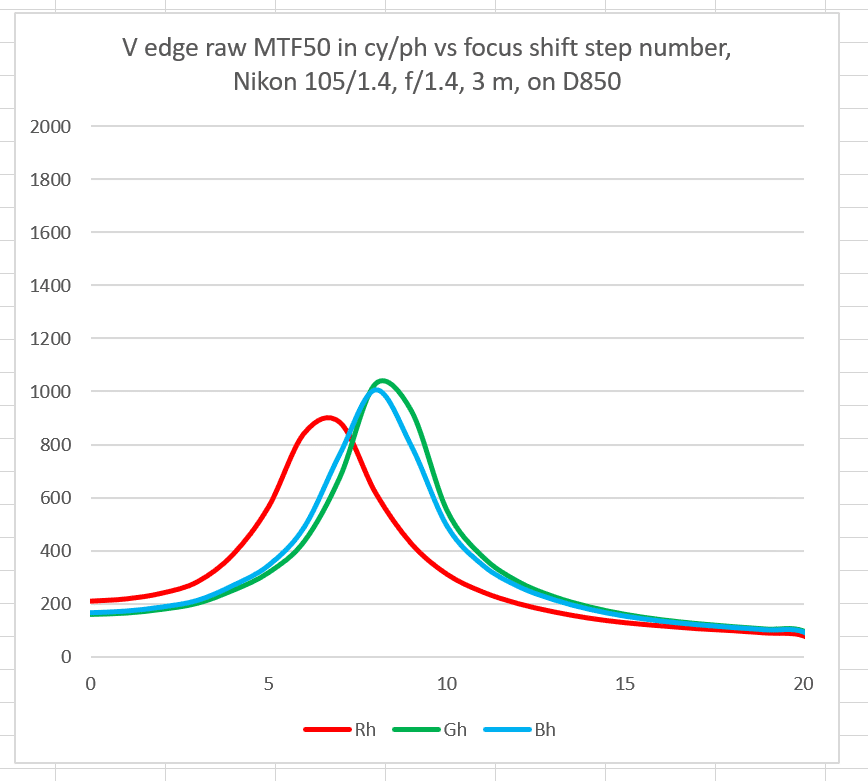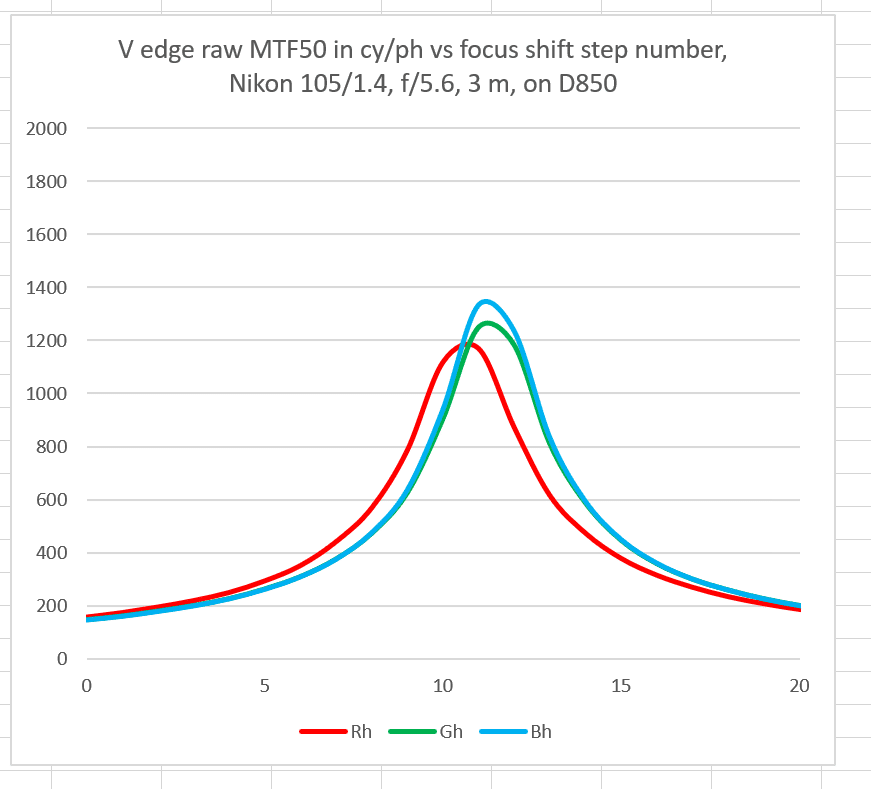This is the tenth post in a series of Nikon D850 tests. The series starts here.
The D850 has a feature that will allow the camera to do automatic focus bracketing with AF lenses. You focus the camera to the minimum distance that you want, tell it how many steps and the (not absolute) distance between them, and turn the camera loose. The camera makes successive exposures, focusing slightly further away for each one. The change in distance is dependent on the focal length and f-stop, and only the camera knows how it juggles those things.
I decided to try the feature with the 105 mm f/1.5 Nikon lens on the same target that I’d used for the autofocus tests. I hoped to:
- Learn how to use the feature
- Discover what the maximum sharpness of the lens is at the distance and f-stops I used for the AF tests.
- Get an idea how the step distance changed with f-stop.
- See if this would work for measuring LoCA and peak sharpness with targets too far away to attempt with the Cognisys rail
But before I got to that point, I had a fight with the camera. When I went to set up the feature, the menu item was grayed out:
And when I tried to invoke it anyway, I got this not-very-informative message:
I floundered around for a few minutes without success, then posted a question on DPR. Within a couple of hours, I had my answer: the feature doesn’t work if the date and time haven’t been set. I hadn’t bothered because I was just testing the camera, but I set those things, and the time zone to boot, and was on my merry way.
Here’s a sample shot of my chosen target:
Here are the details:
- Nikon 105mm f/1.4 on D850.
- ISO 64
- Focus shift, silent shutter option
- 100 steps
- Minimum step size (1)
- Aperture exposure mode
- f/1.4 through f/f/5.6 in whole stops
- Wescott LED panels set to 5500 K.
- Target distance, 3 meters.
I used Fast Raw Viewer to discard the really out of focus images, and put the rest through my processing pipeline: dcraw in document mode, MTF Mapper, Matlab, and Excel.
Here are the MTF50s for each raw color plane for f/1.4:
The vertical axis is MTF50, measured in cycles per picture height (cy/ph). The shot taken with the lens focused to the closest position is on the left, numbered step 0. There are 20 more exposures plotted. There is no way to know the focused distance for these exposures. You can see that the steps are much larger than the ones I use when I’m measuring LoCA and focus shift with the razor blade and the Cognisys rail. I ended up throwing away 80 images from each set.
The rest of the f-stops:
A few things stand out:
- The curves don’t get wider as you stop down, indicating that the camera is making the steps bigger as you stop down.
- You wouldn’t want to use a step much wider than 1 for this lens at this distance if you wanted to have at least one exposure at the peak sharpness the lens can deliver
- This target is not a sharp as the razor blade that I have been using for LoCA testing
- The LoCA is shown by this test, but the longitudinal misfocusing can’t be compared to other lenses directly since we don’t know the step size.
- You can’t measure focus shift this way because, at the end of the run, the camera does not return the lens to the starting focussed distance.
This is very encouraging. I will write a follow-on post that says what we can learn about the camera’s AF performance with this lens based on these results.








Can you check focus breathing? I’m hearing its focal length is less than 105mm wide open.
It is indeed. It’s an internal focusing lens, so that makes sense.
You’re not using the silent shutter for these tests (the option says off)? Would seem to make sense otherwise you’re using up shutter life for no benefit as the targets are static.
I did use silent shutter. That is specified in another menu in the Focus Shift Shooting setup screens, where it overrides other settings.